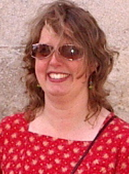A Speculum of Chymical Practice: Isaac Newton, Martin Lister
(1639–1712), and the Making of
Telescopic Mirrors
Anna Marie Roos
In 1674 the natural philosopher and physician Martin Lister published a new method of making glass of antimony for telescopic mirrors, using Derbyshire cawk or barite as a flux. New manuscript evidence reveals that Sir Isaac Newton requested samples of the cawk and antimony from Lister through an intermediary named Nathaniel Johnston. An analysis of Lister's paper and Johnston's correspondence and its context reveals insights not only about Newton's work with telescopic specula but also about his alchemical investigations. Analysing these sources also contributes to our understanding of the nature of correspondence networks in the early ‘scientific revolution’ in England.
Anna Marie Roos is a research fellow in the Modern History Faculty at the University of Oxford, where she is a specialist in early modern history of chemistry and medicine. Before coming to Oxford, Anna Marie Roos was an associate professor of history at the University of Minnesota. Her second book was entitled: The Salt of the Earth: Chemistry, Medicine, and Natural Philosophy in England, 1650–1750 (Leiden, 2007). Her third monograph, entitled Spider Man: Martin Lister, Seventeenth-Century Naturalist and Physician, has received funding from the British Academy, the Royal Society, and the National Science Foundation and will be published in 2011. Dr. Roos has also served as a consultant for BBC Four and was interviewed for its recent television programme, Chemistry: A Volatile History. She has recently filmed a documentary on Newtonian alchemy with National Geographic Channel.

